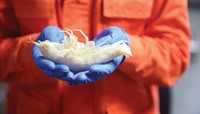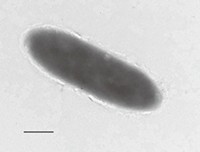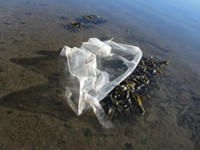Advertisement
Grab your lab coat. Let's get started
Welcome!
Welcome!
Create an account below to get 6 C&EN articles per month, receive newsletters and more - all free.
It seems this is your first time logging in online. Please enter the following information to continue.
As an ACS member you automatically get access to this site. All we need is few more details to create your reading experience.
Not you? Sign in with a different account.
Not you? Sign in with a different account.
ERROR 1
ERROR 1
ERROR 2
ERROR 2
ERROR 2
ERROR 2
ERROR 2
Password and Confirm password must match.
If you have an ACS member number, please enter it here so we can link this account to your membership. (optional)
ERROR 2
ACS values your privacy. By submitting your information, you are gaining access to C&EN and subscribing to our weekly newsletter. We use the information you provide to make your reading experience better, and we will never sell your data to third party members.
Environment
Extreme Living
Researchers find life in unexpected places like underwater asphalt flows
by SARA DRAKE
July 16, 2004
| A version of this story appeared in
Volume 82, Issue 29

“Where are we?” I asked. “In the very heart of an extinct volcano, the interior of which has been invaded by the sea,” Captain Nemo replied.
Ian R. MacDonald, professor of environmental science at Texas A&M University, Corpus Christi, and his crew did not explore their watery reservoir in quite the same way that Nemo and the professor did in Jules Verne’s “20,000 Leagues Under the Sea.” Instead, they dragged a television camera along the rim and surrounding areas of the world’s first known asphalt volcano.
Named Chapopote—Spanish for tar—the volcano in the southern Gulf of Mexico lies 3,000 meters below the sea surface and was discovered by MacDonald and colleagues. Although just a fraction of the depths explored by Verne’s characters, 3,000 meters is considerable for the Gulf of Mexico, which reaches its maximum at 4,384 meters. At this depth, the world is a very dark place. Yet life persists in this extreme environment, as results of MacDonald’s expedition show [Science, 304, 999 (2004)].
MacDonald’s group found entire communities of chemosynthetic critters—organisms that utilize inorganic substances to survive—making a living off the asphalt flows at Chapopote. “[We found] these really beautiful massive clumps of macrofauna—tubeworms, mussels, crabs, and shrimp,” says Beth N. Orcutt, a graduate student at the University of Georgia and one of the paper’s authors. “We don’t know what kind of substances the asphalt could be providing [to the organisms],” Orcutt adds.
“It’s really amazing that anything can live on asphalt at all,” comments Samantha B. (Mandy) Joye, University of Georgia marine sciences associate professor and Orcutt’s Ph.D. adviser. “Asphalts are the last dregs of carbon coming out of these systems. It’s like eating sawdust versus caviar,” she says.
Typically, these chemosynthetic communities are found near gas hydrate deposits formed from methane gas ultimately derived from ancient plant life that was buried during the formation of the Gulf of Mexico. Over time, the Gulf dried up and refilled, leaving layers of salt and sediments. The salt—more buoyant than the overlaying sediments—pushes through the surface of the seafloor, creating a pipeline for methane gas to flow into ocean waters.
Many organisms have evolved to take advantage of these hydrate sites. Some survive by forming symbioses, or mutually beneficial associations. For example, sulfide-oxidizing bacteria live within macrofauna host organisms, such as bivalves and tubeworms, that provide the bacteria with sulfide as a nutrition source. “It’s possible that there is a sulfide source near these asphalts,” Orcutt says. She and the other researchers plan to continue studying the interplay between geology and biology at Chapopote.
Other types of symbiotic bacteria serve their host organisms by oxidizing methane. In return, the macrofauna protect the bacteria from the environment. In addition, there are species of bacteria that are found separately in mats on the surface of the seafloor and survive by coupling sulfide oxidation with nitrate reduction to form ammonium ions. At Chapopote, these bacterial mats are less common than the symbiotic bacteria, but MacDonald’s team did find a few of the mats.
Besides all of its extraordinary inhabitants, what makes Chapopote so interesting is the variety of environments that are found there, including asphalt flows, which require temperatures of at least 150 °C to form, and gas hydrate sites, which require colder temperatures from 6 °C. “The hydrocarbons must be coming from separate reservoirs, one with really degraded hydrocarbons and one with fresher hydrocarbons with oils and gases,” Orcutt says. Other features include oil seeps, locally anoxic sediments, and slabs of authigenic carbonate—carbonate formed in situ, possibly as a result of biological activity.
In “20,000 Leagues Under the Sea,” the professor speaks of the change in species occurrences with depth: “I noticed that the green plants kept nearer the top of the sea, whilst the reds were at a greater depth, leaving to the black or brown the care of forming gardens and parterres in the remote beds of the ocean.” Although photosynthetic organisms are not found at 3,000 feet below sea level, a surprisingly large diversity of other creatures thrive on these remote beds of the ocean.
As MacDonald told Texas A&M journalist Steve Paschal: “Chapopote is more evidence that this planet is alive from top to bottom. There is no place on Earth where life is absent; wherever life gets the slightest foothold, it will adapt and blossom.”






Join the conversation
Contact the reporter
Submit a Letter to the Editor for publication
Engage with us on Twitter